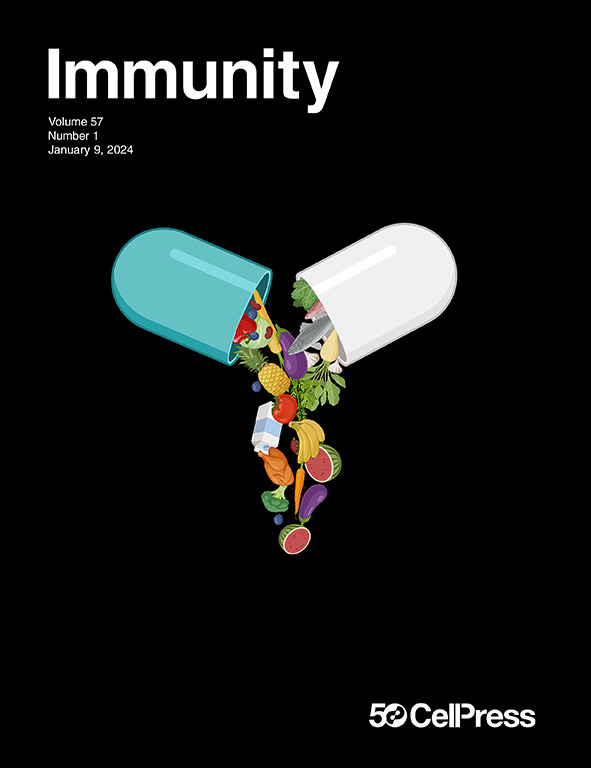Pre-existing epigenetic state and differential NF-κB activation shape type 2 immune cell responses
IF 26.3
1区 医学
Q1 IMMUNOLOGY
引用次数: 0
Abstract
CD4+ T helper 2 (Th2) cells and group 2 innate lymphoid cells (ILC2s) drive type 2 immune responses via similar effector molecules that are primarily induced by different signals—interleukin (IL)-33 in ILC2s and TCR engagement in Th2 cells. Here, we examined the transcriptional regulation of type 2 immunity, focusing on the NF-κB pathway, which is differentially activated by TCR engagement or cytokine signaling. Conditional deletion of the NF-κB subunits c-Rel and p65 limited the expression of key type 2 genes, including Il13 and Il5, in ILC2s but not in Th2 cells. Genome-wide analysis revealed that the regulatory regions of such genes exist in an open chromatin state in ILC2s, allowing NF-κB binding upon IL-33 stimulation. These regions are less accessible in unstimulated Th2 cells, where NFAT plays a dominant role. Accordingly, p65 deletion impaired ILC2 activation and function during airway inflammation and helminth infection. Thus, innate and adaptive lymphocytes leverage distinct epigenetic landscapes and transcriptional regulators to control shared effector genes.预先存在的表观遗传状态和差异NF-κB激活形成2型免疫细胞反应
CD4+ T辅助2 (Th2)细胞和2组先天淋巴样细胞(ILC2s)通过相似的效应分子驱动2型免疫反应,这些效应分子主要由不同的信号诱导- IL -33在ILC2s和TCR参与Th2细胞。在这里,我们研究了2型免疫的转录调控,重点关注NF-κB途径,该途径通过TCR参与或细胞因子信号传导而被不同地激活。NF-κB亚单位c-Rel和p65的条件缺失限制了ILC2s中关键2型基因(包括Il13和Il5)的表达,而在Th2细胞中则没有。全基因组分析显示,这些基因的调控区域在ILC2s中以开放的染色质状态存在,允许NF-κB在IL-33刺激下结合。这些区域在未受刺激的Th2细胞中不易接近,在那里NFAT起主导作用。因此,p65缺失会在气道炎症和蠕虫感染期间破坏ILC2的激活和功能。因此,先天淋巴细胞和适应性淋巴细胞利用不同的表观遗传景观和转录调节因子来控制共享的效应基因。
本文章由计算机程序翻译,如有差异,请以英文原文为准。
求助全文
约1分钟内获得全文
求助全文
来源期刊

Immunity
医学-免疫学
CiteScore
49.40
自引率
2.20%
发文量
205
审稿时长
6 months
期刊介绍:
Immunity is a publication that focuses on publishing significant advancements in research related to immunology. We encourage the submission of studies that offer groundbreaking immunological discoveries, whether at the molecular, cellular, or whole organism level. Topics of interest encompass a wide range, such as cancer, infectious diseases, neuroimmunology, autoimmune diseases, allergies, mucosal immunity, metabolic diseases, and homeostasis.
 求助内容:
求助内容: 应助结果提醒方式:
应助结果提醒方式:


